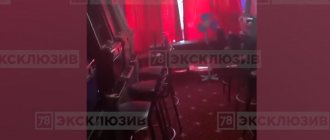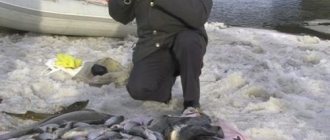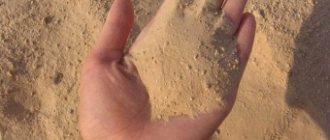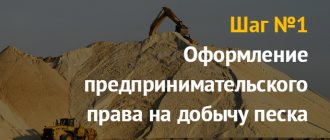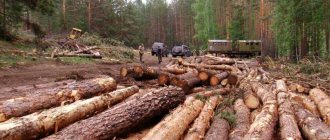Illegal sand extraction entails liability for illegal use of subsoil.
You can avoid the imposition of sanctions for actions in relation to the development of a subsoil plot with sand located on the development territory by obtaining a license. However, in the absence of a license, the authorized bodies, in addition to paying a fine, will be obliged to compensate the state for damage associated with illegal sand mining. Multi-channel free hotline Legal advice on criminal law. Every day from 9.00 to 21.00
Moscow and region: +7 (495) 662-44-36
St. Petersburg: +7 (812) 449-43-40
General requirements for sand mining
In the Russian Federation, sand mining activities are associated with compliance with licensing requirements for this type of activity, since sand is a mineral resource and is classified as a subsoil object.
At the same time, subjects who can freely mine sand without fear of sanctions for this type of activity are legally defined:
- Owners of land plots whose use category is defined as household, garden or vegetable gardening. It is not illegal to extract minerals on the territory of such land within the boundaries of private property.
- Legal entities that mine sand in the territories of geological land allotment or within the boundaries of mining allotment. Moreover, such activities must be entered into the OKVED of such an enterprise.
A commercial enterprise deciding to mine sand on an industrial scale must ensure that it has:
- Relevant qualifications of sand quarry development specialists.
- Equipment that is designed for work in a quarry.
- Specialists in the field of taking measurements at the quarry site and further displaying it on specialized maps of the area. Such specialists are called surveyors, and an enterprise that claims to mine sand is obliged to employ such engineers or technicians on staff.
In addition to the availability of personnel and equipment, you should have certain rights to the site.
Jurisdiction of claims for compensation for damage to subsoil
Typically, claims from supervisory authorities for compensation for damage to subsoil are considered by arbitration courts according to the rules of claim proceedings, since unlicensed mining is directly related to the implementation by subsoil users of their main business activities.
However, there are precedents when prosecutors file appropriate claims in courts of general jurisdiction and they are accepted for proceedings. The courts, in response to statements from subsoil users about violation of the rules of jurisdiction, indicate that the prosecutor has the right to file a claim for recovery of damage to the subsoil in a court of general jurisdiction, and not in arbitration, since he is not a participant in business activities (resolution of the Presidium of the Trans-Baikal Regional Court dated May 16, 2022 No. 44G44/2019).
Corpus delicti
Depending on the qualifications of the act, as well as the severity of the damage caused, liability for illegal sand mining may be administrative in nature or subject to criminal penalties.
Most often, the offender is brought to justice under Part 3 of Article 8.13 of the Code of Administrative Offenses of the Russian Federation. This article contains eight different dispositions, including those on illegal sand mining within the boundaries of a water body. This offense has a formal structure. The object of protection in this case is social relations in the field of extraction of water resources classified as natural resources.
In accordance with the sanctions of this article, the fines are small:
- For a violator - an individual, liability cannot exceed one and a half thousand rubles.
- For a violator who is a representative from an organization, the maximum fine is doubled and cannot be charged more than three thousand rubles.
- As expected, the highest responsibility falls on a legal entity. In this case, the maximum fine is ten times the amount that is imposed on a representative or official of the organization.
In some cases, violators are held accountable for violating Part 1 of Article 7.3. This rule provides for liability for unauthorized sand extraction, without special permission from the authorized body.
The penalties for such an offense are much heavier. A citizen carrying out unauthorized mining will be fined up to 5,000 rubles. Whereas a person authorized by the organization (representative or official) will be punished in no more than 50,000 thousand rubles. An organization may be subject to administrative penalties of up to 1,000,000 rubles. At the same time, the minimum fine is set at 800,000 thousand.
If an organization made a large profit in the process of sand mining and did not comply with licensing requirements, it will be prosecuted.
Part one of this article provides for punishment imposed on the head of the organization in the form of:
- fine (the maximum barrier cannot exceed 300,000 rubles);
- the amount of income or salary for the two previous years;
- compulsory work for a total duration of up to 8 days;
- arrest for a period of no more than six months.
Article 171 of the Criminal Code provides for liability for conducting business activities without obtaining permits (in this case, without a license for sand mining).
An aggravating circumstance is provided for in part 2 of this article and provides for the same act that is committed by an organized group or with the extraction of excess profits.
Liability may come in the form of:
- penalties from 500,000 to 1,000,000 rubles;
- amount of income or salary from 12 to 36 months;
- forced labor for a total period of up to 60 months;
- imprisonment for a total term of up to 60 months with a mandatory fine of up to 80,000 rubles (the fine can be replaced by the amount of salary for no more than 6 months).
Depending on the classification of the crime and the discovered consequences of illegal sand mining, the court may establish liability both on the basis of the norms of the Code of Administrative Offenses and on the basis of the norms of the Criminal Code of the Russian Federation.
Forms of violations associated with illegal mining
Judicial practice identifies the following forms of violations related to unlicensed mining, which lead to damage to the subsoil and bringing mining companies to administrative liability, provided for in Part 1 of Art. 7.3 Code of Administrative Offenses of the Russian Federation and Art. 7.5 Code of Administrative Offenses of the Russian Federation:
- mining beyond the boundaries of the license (Resolution of the Supreme Council of the Russian Federation dated December 10, 2018 No. 304AD1820247). It should be taken into account that mining within a mining allotment, but beyond the boundaries of the license, is the use of subsoil without a license (Part 1 of Article 7.3 of the Code of Administrative Offenses of the Russian Federation), and not a violation of the conditions for the use of subsoil (Part 2 of Article 7.3 of the Code of Administrative Offenses of the Russian Federation) (resolution AS VSO dated December 19, 2014 in case No. A783397/2014);
- extraction of mineral resources / groundwater for commercial purposes (determination of the Supreme Court of the Russian Federation dated May 4, 2017 No. 305KG174863);
- extraction of mineral resources / groundwater in volume and depth exceeding the limit established by Art. 19 of the Law on Subsoil (determination of the Supreme Court of the Russian Federation dated December 10, 2018 No. 304AD1820247);
- extraction of mineral resources after the expiration of the license for exploration and production of mineral resources (resolution of the AS ZSO dated November 13, 2014 in case No. A523535/2013).
How to obtain a sand mining permit
Before applying for a sand mining license, it is necessary to obtain the prior consent of the local land administration authority. If the site where it is planned to extract sand is privately owned, then its alienation can be obtained if there is consent to the allocation of land for subsoil use.
After receiving such approvals, a project for subsoil use should be drawn up. Since a license is issued for each type of work with minerals, the work project should be drawn up taking into account the extraction of sand only. If fishing is expected, then the licensing authority that registers the organization as a licensee is the Federal Agency for Subsoil Use.
To obtain a sand mining license you will need the following documents:
- Application or application for a license. It specifies the details of the legal entity, specifies the location of the site, the purpose, and also makes a prognostic calculation for production needs.
- Copies of certificates of ownership of the devices and technical means with which mining will be carried out are attached to the application.
- Attached is the staffing table and documents on the qualifications of the company’s personnel.
- Attached is confirmation of the presence of surveyors on staff. The legislation allows for the involvement of this service under an outsourcing agreement, support for a certain type of activity with the involvement of specialists from its own staff.
- One of the attachments to the application is a balance sheet or certificate of financial condition.
- A copy of the certificate of opportunity to use a plot of land (extract from the Unified State Register of ownership or long-term lease).
- A copy of the receipt for payment of the state fee.
It is important to know that the right to extract sand under a license cannot be transferred to third parties. That is, contractual relations in this case are prohibited.
If an organization transfers rights by assignment (for example, assignment of debt and the right to engage in activities), then the permit is subject to re-issuance.
Forms of compensation for damage caused to subsoil
There are two forms of compensation for damage caused to the ecological environment (subsoil, soil, water and biological resources), namely:
- recovery of damages in monetary form;
- compensation for damage in kind by taking measures to restore the damaged state (reclamation).
The procedure for carrying out reclamation work on land plots is determined by the order of the Ministry of Natural Resources of Russia and Roskomzem dated December 22, 1995 No. 525/67 “On approval of the Basic Provisions on land reclamation, removal, preservation and rational use of fertile soil layer.”
Garbage instead of fish
Dolgova continues to fight the “sand pit generals”, talking in detail about her activities on social networks, despite the threats received against her. It was thanks to Dolgova and the journalists of the Rossiya 1 TV channel that the history of the quarry near the village of Zaovrazhye was widely publicized. The first report about him came out in October 2015. However, no one was going to close it, the situation did not change behind the scenes. Local residents continued to be assured that upon completion of the work, the quarry would be flooded and a pond would be created - an excellent place for recreation. The public's vigilance was lulled, but by April 2022, so much fill soil had accumulated that it descended in the form of a mudflow onto the only road connecting Zaovrazhye with other populated areas. Luckily, no one was hurt.
But even after this, development here did not stop. And public activists managed to draw attention to the ill-fated quarry in November 2022. It turned out that the promised fish farm was never opened there, but instead they began to dump waste of the 4th hazard class. And only then was it possible to suspend the operation of the quarry, but information about who bore what responsibility for illegal actions remained behind the scenes.
What is a license
This is a document that authorizes an individual or legal entity to conduct certain activities legally. The license confirms the qualifications. Accordingly, when turning to a licensed specialist, a person can be sure that he will be provided with services of the appropriate level. Carrying out medical activities without a license entails a fine.
The current legislation of the Russian Federation obliges all private clinics, pharmaceutical companies and other medical institutions that conduct medical practice on a paid basis to obtain a license. It is a criminal offense to engage in private medical practice illegally. Moreover, the choice of preventive measure depends on the presence/absence of damage caused to the patient’s health.
How to get a license
To obtain permission to conduct medical activities, a medical education or an appropriate certificate is required. The latter is issued to persons engaged in healing activities. The validity period of a healer's diploma is 3 years. No medical education is required.
The legislation of the Russian Federation prohibits healers from conducting ordinary medical practice. The activities of folk doctors are subject to strict control. Therefore, when complaints are received, appropriate checks are initiated, as a result of which the healer may be deprived of his license.
Permission is issued to legal entities for an indefinite period. This is stated in Article 5 of Federal Law No. 99. To obtain a license to conduct medical or pharmaceutical activities, a private clinic must meet the following criteria:
- Availability of a lease or purchase and sale agreement for premises that will be used to receive patients.
- Availability of necessary equipment and tools.
- Each specialist working in the clinic must have a diploma confirming their qualifications.
- The premises must comply with established sanitary standards.
Grounds for challenging claims for damages related to damage to subsoil
Judicial practice has developed a number of grounds that entail a reduction in the requirements declared by supervisory authorities, or a full refusal to satisfy such requirements.
Such grounds include:
- failure to establish guilt: mineral extraction was carried out before the land plot was leased to the subsoil user (resolution of the Arbitration Court of the Volgo-Vyatka District dated December 5, 2016 in case No. A116722/2015);
- the supervisory authority incorrectly calculated the volume of exported minerals, incorrectly applied the formula for calculating damage to the subsoil (resolution of the Arbitration Court of the East Siberian District dated 08/06/2018 in case No. A1911709/2017) (damage was calculated as not resulting in the loss of mineral reserves);
- it has not been proven that it was the person’s equipment that was used in the illegal extraction of minerals (resolution of the Arbitration Court of the Far Eastern District dated July 5, 2017 in case No. A0410781/2016);
- the supervisory authority overestimated the volume of unlicensed extracted minerals when calculating damage (resolution of the Arbitration Court of the Far Eastern District dated November 21, 2018 in case No. A0496/2018) (the volume of OPI shipped to third parties in the product range does not coincide with the calculation of the supervisory authority);
- damage was caused to the subsoil (groundwater) in a state of extreme necessity - Art. 1067 of the Civil Code of the Russian Federation (resolution of the Arbitration Court of the West Siberian District dated 02/08/2018 in case No. A753268/2017) (the need to provide the population with drinking water);
- the court did not give a legal assessment of the actions of the co-defendants and did not determine the degree of guilt of each of them (resolution of the Arbitration Court of the Volga District of September 25, 2018 in case No. A1218782/2017) (actual unlicensed mining was carried out by the contractor, and not by the license holder).
